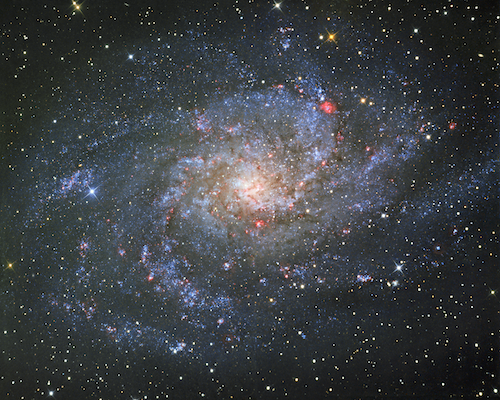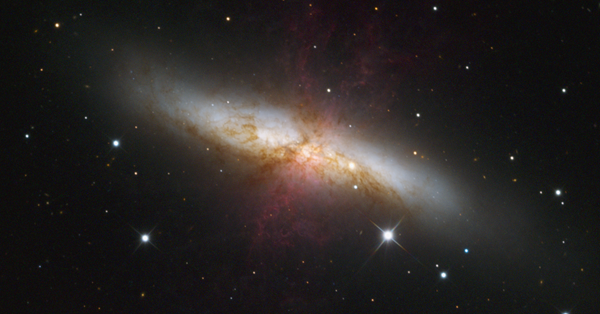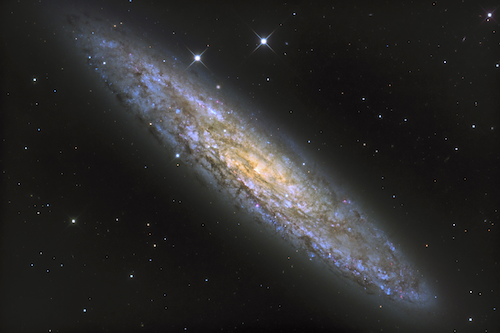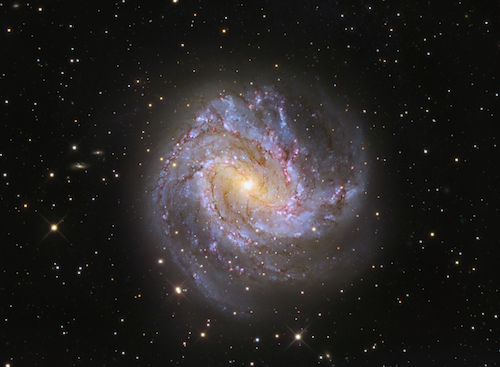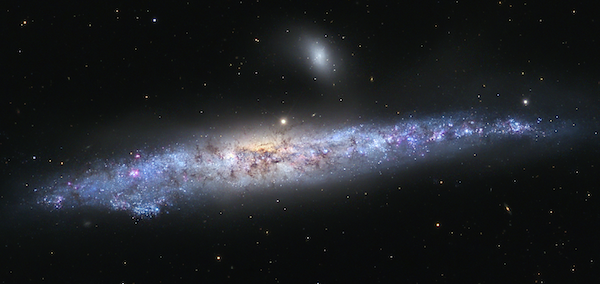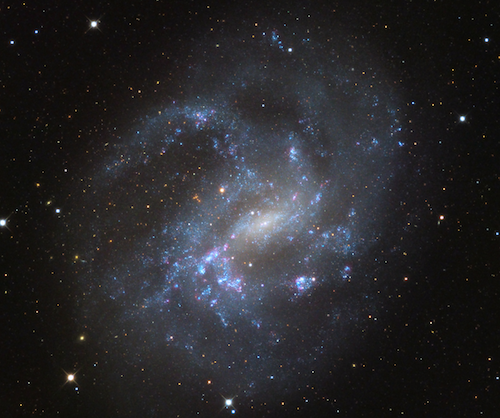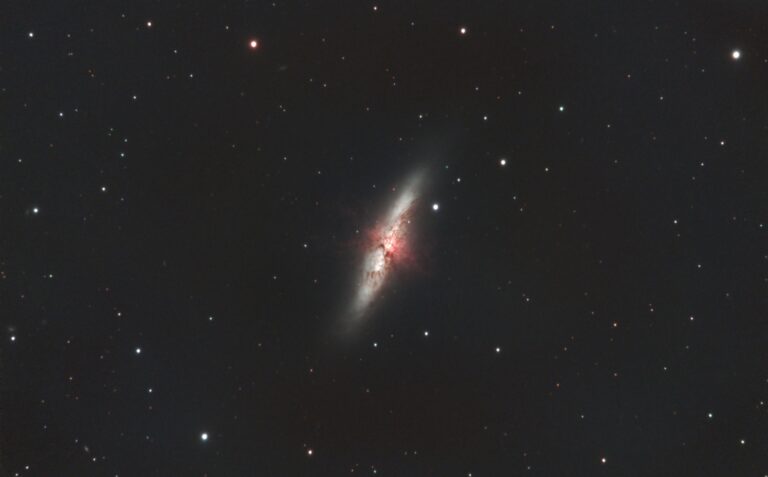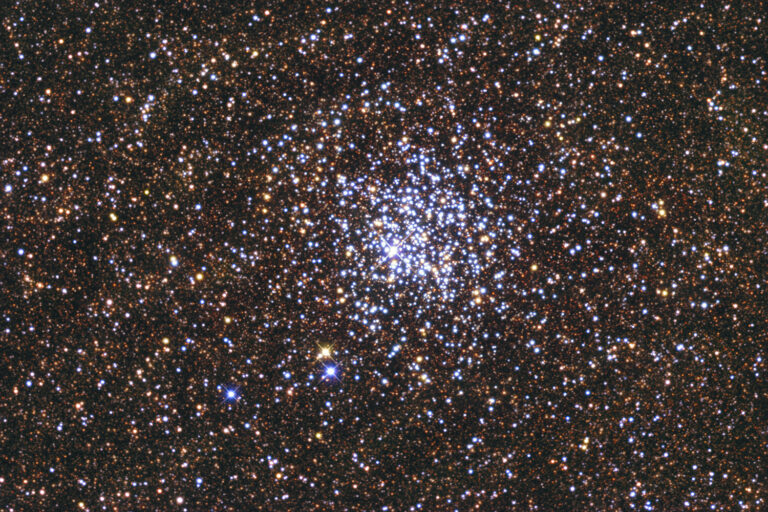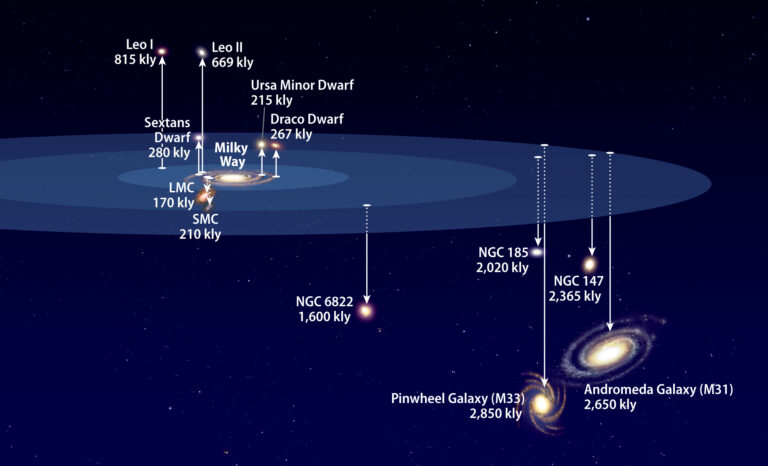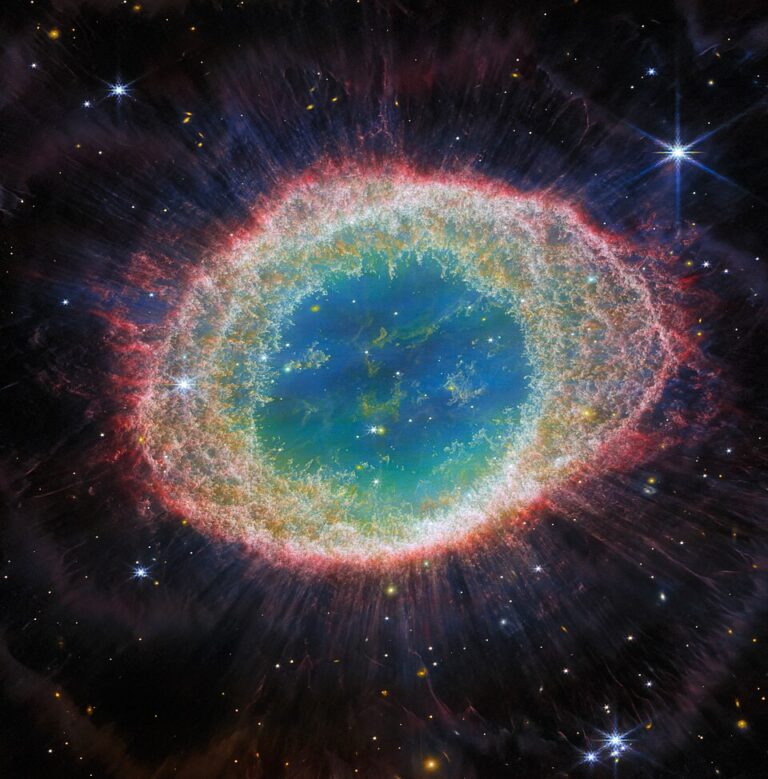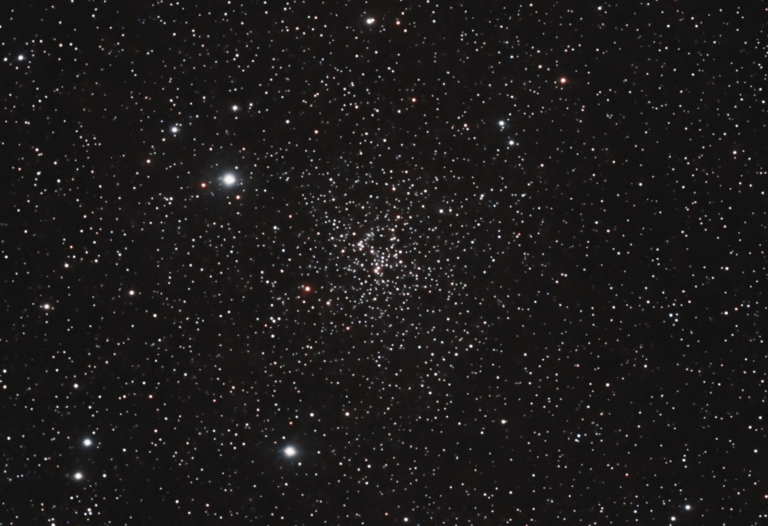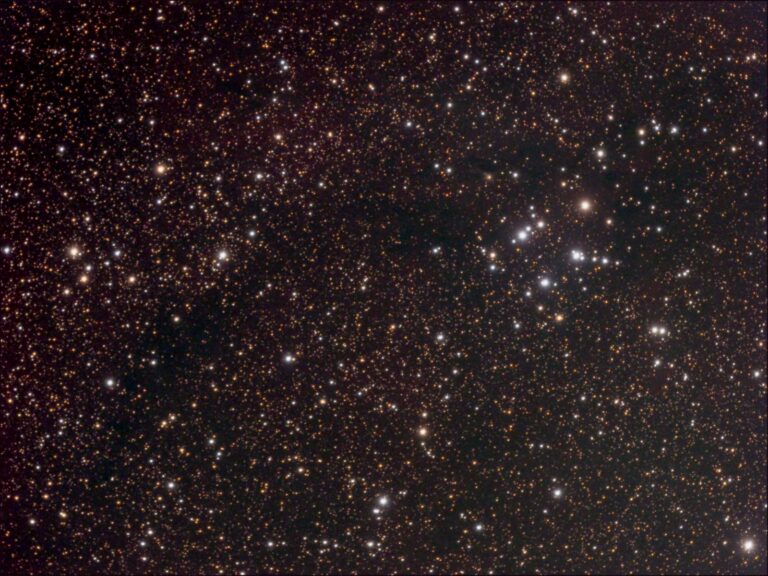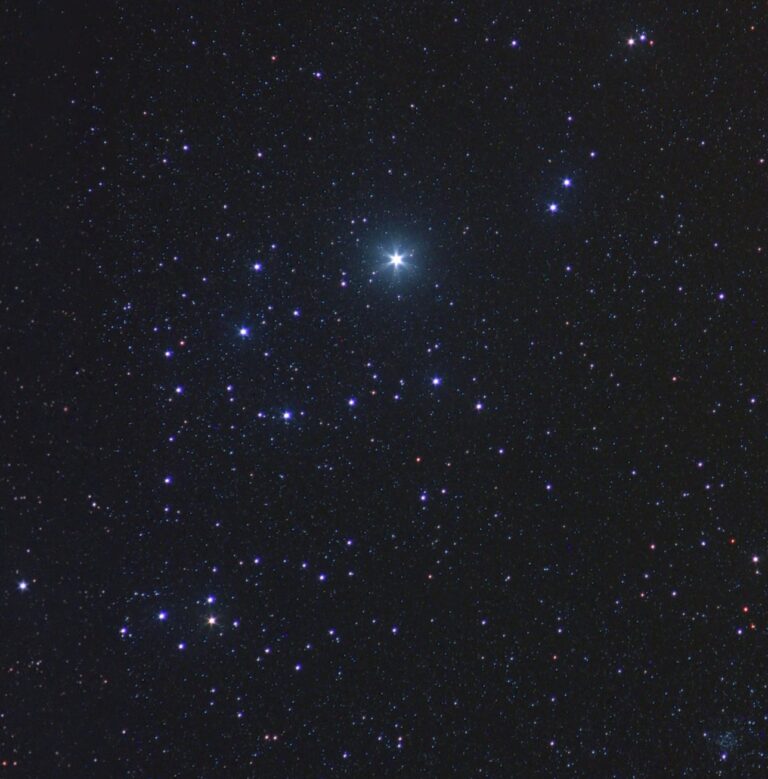Key Takeaways:
- Observing galaxies requires significant aperture; telescopes with 8-inch or larger apertures are recommended for optimal viewing, with larger apertures revealing fainter details.
- Galaxy observation success depends on factors beyond aperture, including patience, high magnification to increase contrast, and favorable atmospheric seeing conditions.
- While filters may aid observation in some cases, their effectiveness varies, and they might not be beneficial for all galaxies or telescope sizes.
- Numerous galaxy catalogs and databases, such as the NASA/IPAC Extragalactic Database (NED), provide comprehensive information for galaxy observation planning and target selection.
Galaxies are so far away that, except for a few, they appear small and faint.
Advanced observers regard observing faint galaxies as a challenge. I know one amateur who progressed from an 8-inch telescope to a 12-inch, then to a 16-inch and, as I write this, now a 24-inch scope. With each new telescope, the galaxies he observed became fainter and fainter, always just at the limit of what the telescope would reveal.
This type of compulsive, competitive observing may not be for you. That’s OK. Lots of galaxies out there are relatively bright.
My late friend, Jeff Medkeff, developed a simple rule to determine how difficult a galaxy will be to see. He multiplied the magnitude by the surface brightness. The higher that number (no units, just a number), the tougher the galaxy will be to observe. This rule seems to provide a good indicator of difficulty.
Before you observe
In my experience, six factors will determine how well your galaxy observing session goes.
1) Size does matter.
You can be the greatest observer this planet has ever seen, but if you’re trying to observe galaxies through a 4-inch telescope, your observing log is going to be filled with reports of rough shapes and descriptions like “hinted at” and “small and faint.” There’s no way around it. If you want to observe galaxies — and I mean really get something out of the time you put in at the eyepiece — you have to use a telescope with an aperture of 8 inches or more.
Rome was not built in a day. Likewise, a galaxy will not give up its secrets in a minute. Begin by noting its overall shape. Is it round, oval, rectangular, triangular? (At this stage, no description is a bad one.) Next, look at the way the brightness is distributed. Is there a central condensation? Are there brighter areas elsewhere? Note the stars in the field of view. How does the galaxy, or its brighter parts, compare with the field stars?
3) Crank up the power.
Use whatever eyepiece you must to locate your target galaxy. Then start to increase the magnification.
In my opinion, one of the biggest mistakes that new observers make is believing that a lower power will make the galaxy easier to see. In fact, using higher power will increase the contrast between the galaxy and the sky background. Roger N. Clark writes at length as to why this is true in his superb book, Visual Astronomy of the Deep Sky (Cambridge University Press, 1990).
When viewing galaxies, experience at the eyepiece is never more important; what looked to me like an amorphous blob when I first began observing now reveals a wealth of faint details.
Here’s something good to know when you’re starting out: When observing galaxies, especially in rich areas such as Coma Berenices and Virgo, check the field of view carefully. Your telescope may reveal galaxies not on your star map.
5) Filters can help.
Galaxies emit light from a combination of different types of objects. Because of this, their spectra are essentially continuous. Using a filter simply removes some of the galaxy’s light, making faint targets even more difficult to observe.
In a few cases, light pollution filters may help, but they’re useless if you have a small scope. Some observers with large scopes use an 82A filter to observe galaxies because of what it does to suppress the natural glow of the upper atmosphere.
Other observers have used both light and dark blue filters on bright spiral galaxies to boost the contrast of their arms. The results vary, but this technique does work on the Whirlpool Galaxy (M51), the Southern Whirlpool Galaxy (M83), and others.
Whether or not your telescope will provide superb views on any given night is out of your control. The seeing — or atmospheric steadiness — sets the limit on how much detail is available.
Some amateur astronomers believe that because galaxies are extended objects, seeing does not affect them as much as, say, double stars. While it’s true that galaxies are relatively large, the details you’re trying to pick out in them (spiral arm structure, stellar condensations, etc.) are not, and those details are at the mercy of the night’s seeing.
What to observe
For success in observing detail through medium-sized telescopes, stick to the spirals in Charles Messier’s catalog, especially M31, M33, M51, M64, M81, M83, M106, and M108. For observers with large telescopes, try M61, M91, and M95, as well as NGC 1395. These four objects are barred spirals. With enough magnification, you’ll easily see both the bar and the extent of the spiral arms.
Visually observing detailed spiral structure, like you see in images, requires a large telescope. My preference is to use 20-inch telescopes and larger for such work. I don’t own a scope that big, but I do attend as many star parties as I can — and I have lots of stargazing friends. Through smaller scopes, I often see what many call mottling (an alternating light and dark pattern), which may indicate the presence of spiral arms but isn’t a true observation of them.
Irregular galaxies are the smallest class of galaxies, but in my opinion, they’re far more interesting than ellipticals, the largest class. Most irregulars are faint, but there are exceptions. The king of irregular galaxies for northern amateur astronomers is M82 in Ursa Major. In the Southern Hemisphere, well, it’s pretty obvious. The Large and Small Magellanic Clouds are, by virtue of their closeness, the brightest galaxies — of any type — period. The Southern Cigar Galaxy (NGC 55) in Sculptor, Caldwell 21 (NGC 4449) in Canes Venatici, Centaurus A (NGC 5128) in Centaurus, and Barnard’s Galaxy (NGC 6822) in Sagittarius are other relatively bright irregular galaxies.
Do you have a large scope and lots of patience? Observing clusters of galaxies may be for you. Such groupings, held together by mutual gravitational attraction, can contain a handful of galaxies or more than a thousand. And if you’re just starting out, do note that a galactic cluster and a cluster of galaxies are totally different. The former is a group of stars (also known as an open cluster). The latter is a group of galaxies.
Two popular clusters of galaxies are the Virgo Cluster and the Fornax Cluster. The Virgo Cluster lies about 50 million light-years from Earth, and it’s bright — for a cluster. A number of Messier objects are members of it, including M49 (the brightest), M58, M60, M84, M85, M86, M87, M88, M89, M90, M98, M99, and M100. In addition, more than a hundred reasonably bright NGC galaxies belong to the Virgo Cluster.
While the Virgo Cluster is the best known such group, many observers consider the Fornax Cluster the finest for amateur astronomers because of the interesting galaxies it contains. They number just 18. The brightest is Fornax A (NGC 1316) at visual magnitude 8.8 with a surface brightness of 12.7. NGC 1399 (visual magnitude 9.8, surface brightness 12.3) is the next easiest to see. NGC 1365 (visual magnitude 9.5, surface brightness 13.7) is third easiest. This is a face-on barred spiral with open spiral arms. Through a big scope equipped with a wide-field, high-power eyepiece, you’ll spot up to 10 members of the Fornax Cluster.
Indeed, the brightest Abell clusters can provide serious satisfaction for large-scope users. Unfortunately, thousands of these groups will forever lie beyond the range of amateur instruments.
For other galaxy clusters, try the brightest members of the Hickson Catalog. Canadian astronomer Paul Hickson authored Atlas of Compact Groups of Galaxies in 1994. This book contains 100 compact galaxy groups, including some famous ones such as Stephan’s Quintet. Don’t buy this book if you’re just starting out; this is a list for serious amateur astronomers with large telescopes.
Many catalogs of galaxies exist. Some of the better ones are the Morphological Catalogue of Galaxies (abbreviated MCG), which contains 30,642 objects, the Zwicky Catalogue of Galaxies (ZC) with 19,367 objects, the Uppsala General Catalog (UGC) with 12,921 objects, and the Southern Galaxy Catalogue (SGC), compiled by the European Southern Observatory, with 5,476 objects. All of these catalogs give positions in right ascension and declination for the included galaxies, accurate to a few arcseconds.
But the best reference source for galaxies, bar none, is the NASA/IPAC Extragalactic Database (NED). If you need information about a galaxy, try NED first. At this writing, it includes data for 471 million objects. All of the above mentioned catalogs are subsets of the NED and are in its data set. Thankfully, this wonderful resource can be found on the internet at http://nedwww.ipac.caltech.edu. Prepare to be overwhelmed!
Your assignment
Galaxy observing can be overwhelming if you’re a beginner. Luckily, you have me as your guide, and I’ve given you a starting point: On page 46, you’ll find a list of every galaxy brighter than 10th magnitude, in order of right ascension. These are showpieces through large amateur telescopes, and they’re not too bad when viewed through 6- to 12-inch scopes from a dark site. Start with them, then move to fainter targets. And take your time. As you’ll soon discover, each galaxy has a lot to offer.

